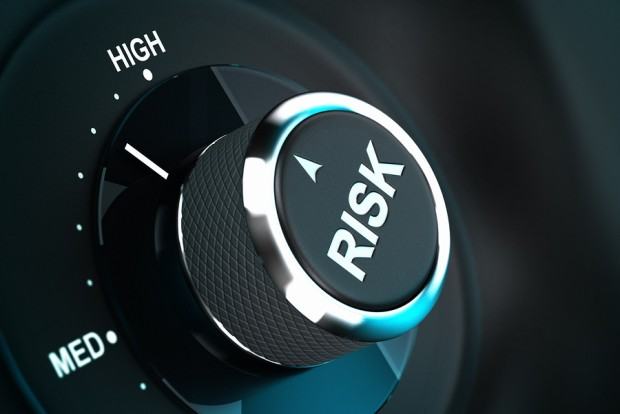Manmade threats are becoming increasingly significant, bringing potentially huge losses to cities, which could present a major risk to the world’s future global and economic growth, according to findings of the Lloyd’s City Risk Index 2015-2025.
Indeed, total GDP at risk from manmade events—such as market crashes, cyber attacks, power outages and nuclear accidents—could put at risk $2.1 trillion of the total projected GDP of 301 of the world’s major cities in the coming decade, said Trevor Maynard, head of Exposure Management & Reinsurance at Lloyd’s.
A market crash represents the greatest economic vulnerability, accounting for nearly a quarter of all cities’ potential losses, said Maynard, discussing emerging trends in the global risk landscape, during a September briefing to launch the Lloyd’s City Risk Index.
(When a major city is hit by a catastrophic event, such as an earthquake or a financial crisis, it reduces its economic output, Lloyd’s explained, noting that GDP@Risk is the loss of output relative to the economic output that would have been expected for the city had the event not happened. Lloyd’s City Risk Index 2015-2025 takes the first five years of lost economic output as the standard measure of GDP at risk from an event.)
In addition to manmade threats, Maynard revealed a second emerging trend in the global risk landscape: Emerging economies will shoulder an increasing proportion of risk-related financial loss as a result of their accelerating economic growth.
“The emerging economies have the most to lose,” he said, noting that GDP@Risk from the emerging economies is $3.26 trillion, or two-thirds of risk-related financial losses. These cities, he noted, are those most often highly exposed to single natural catastrophes.
He pointed to a third major trend in the risk landscape: new or emerging threats. These include cyber attack, human pandemic, plant epidemic and solar storm and potentially account for $1 trillion, or nearly a quarter of total GDP@Risk, he said.
While insurance has a key role in recovery finance, Maynard emphasized that the point of the Lloyd’s City Risk Index is not to sell more insurance. The intention is to get people to think about risk and what can be done to control it, such as improving structural resilience for buildings, he said. “Insurance is only one piece of the puzzle.”
Dr. Andrew Coburn, director of Advisory Board of Cambridge Centre for Risk Studies at the University of Cambridge Judge Business School, then provided a presentation to discuss the research behind the development of the Lloyd’s City Risk Index. (The index is a product of a research partnership between Lloyd’s and Coburn’s team.)
The Cambridge team wanted “to create a tool that would be used to explore these trends over time to help us understand and get our arms around the changing nature of risk. This is not just about broken buildings; it’s about broken societies.”
He explained that new metrics had to be developed for GDP@Risk, which would show how much of normal economic output would disappear if a catastrophe strikes.
Cities were examined as economic systems with lots of parts that come together—their people and physical assets, which are the traditional focus of insurance protection. Increasingly, however, Coburn said, “we need to protect and think about the systems at risk: the utilities, the power and the communications that underpin the city, and most critically, connectivity.”
Cities are all about connections, providing places for people to meet, he noted, “and disrupting that is actually what causes a lot of economic hardship.”
The list of the 301 most economically powerful cities was developed by first looking at more than 5,000 cities, he said. Cities on the final list include “all the major economic drivers of the world’s economy; half the world’s economy is driven by these cities.” All the “megacities” are included, as are cities with more than three million in population.
This reflects the fact that the world’s economy is increasingly urbanized, which in turn drives more of the world’s economy, Coburn said. “It’s not just that people are choosing to live in cities because they earn a better standard of living. Cities themselves provide economic growth; it is the economic concentration that drives cities.”
The Cambridge Centre for Risk Studies projects that these 301 cities will actually account for two-thirds of the world’s economy in 10 years, up from the current level of 50 percent of the global GDP.
Another important trend for these cities is the move from manufacturing to knowledge economies, which are even more vulnerable to disruption of power systems, cyber attacks and communications, Coburn said. “Knowledge economies need much more robust infrastructure.”
Quick Recovery Creates Better Resilience
He emphasized that resilience in the face of a major catastrophe is vital, citing the example of the earthquake that hit Kobe, Japan in 1995.
Before the earthquake, Kobe had four primary industries: one of the world’s leading ports, one of the largest steel production areas in Japan, a major manufacturing center for shoes and a center for sake breweries.
“When this earthquake occurred, all those primary industries were very badly hurt. The steel mills had a huge boost from the reconstruction, but it was only temporary,” he continued. “The steel industry never recovered. The port was out of action for two years, and it never recovered because people took their trade elsewhere to other ports.”
In a statement, Lloyd’s acknowledged: “How quickly a city recovers after a catastrophe is a key component of the total risk.”
“…[G]overnments, businesses and communities need to consider how they can improve the resilience of infrastructure and institutions,” said Inga Beale, CEO of Lloyd’s, who also spoke at the City Risk launch. “At stake is business and community resilience, the protection of valuable assets and future global and economic growth.”





















 What Industry Executives Are Saying About Loss Reserves, Social Inflation
What Industry Executives Are Saying About Loss Reserves, Social Inflation  Progressive Gains as Drivers Shop Around for Auto Insurance—Again
Progressive Gains as Drivers Shop Around for Auto Insurance—Again  Viewpoint: Risks for D&O Insurers Exploring the New Frontier of Gen AI
Viewpoint: Risks for D&O Insurers Exploring the New Frontier of Gen AI  USAA to Lay Off 220 Employees
USAA to Lay Off 220 Employees 
